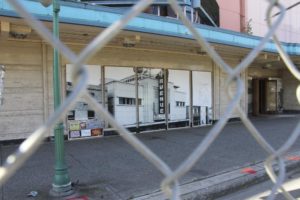WHAT TO KNOW TODAY
Chicago’s gun violence plan looks good on paper, prevention leaders say. Can the city pull it off? Violence prevention leaders, researchers, and funders told my colleague Lakeidra Chavis that the blueprint — which prioritizes police reforms and expansions to social services — is a good first step. But to make it happen, they say the city will need to provide consistent funding to anti-violence initiatives, continuity between political administrations, and the patience to see progress. Moreover, Chicago is facing a massive budget deficit, and the plan does not include an estimate for how much it will cost. Lance Williams, an urban community studies professor at Northeastern Illinois University, said he was impressed that the plan reflects an understanding of the role despair and frustration plays in everyday violence. But he also worried that parts of it are too vague. “I just kept asking myself repeatedly as I read the report: ‘OK, how are you going to do this?’” You can read Lakeidra’s story here.
In California, first-time buyers made up more than 40 percent of gun sales since the start of the pandemic. That’s according to preliminary research conducted by Dr. Nicole Kravitz-Wirtz and colleagues at the Violence Prevention Research Center at the University of California, Davis. The pandemic has fueled a historic surge in gun sales, and in California, that’s led to an estimated 110,000 people purchasing guns. Researchers also found that residents’ fears of violence had markedly increased. More than one in 10 respondents said they worried someone they knew would intentionally harm themselves or others because of pandemic-related factors. “One of the key takeaways from this work is that violence touches the lives of far more people than is typically recognized through not only direct exposure or involvement, but also through indirect and vicarious experiences that ripple across individuals, families, and entire communities,” Kravitz-Wirtz told me. She added, “Although the perceived need for self-protection continues to motivate firearm ownership amid the pandemic, an extensive body of evidence suggests instead that the presence of a firearm in the home elevates risk for firearm-related harm.”
Brooklyn’s top federal prosecutor will bring more local gun cases to court. Advocates worry about the costs. The acting U.S. attorney says the change will help curb rising shootings and bypass state bail reforms that allow many people charged with gun offenses to be released from jail pending trial. Advocates blasted the new effort, which is consistent with the Trump administration’s broader prosecutorial crackdown in other cities facing elevated rates of violence. “These ongoing efforts to federalize local crimes accomplish nothing more than securing the removal of individuals from their communities and undermining the stability of those communities,” said one Brooklyn public defender. From the archives: In 2017, Trace contributor Mark Obbie looked at policies that send more gun cases to federal court and found they do not help to reduce violent crime.
Class-action suit accuses NYPD of thousands of unwarranted stops. Looking for guns was a common pretext. In the suit, mostly Black and Hispanic residents said plainclothes officers illegally stopped them without cause to run their IDs in law enforcement databases. The practice “is the latest tactic in a long history of unwarranted search and seizure practices,” the suit reads. Officers often said they were looking for guns when justifying the temporary detentions, according to many plaintiffs.
DATA POINT
Nearly two-thirds — how many of the 185 fatal victims of intimate partner violence in Texas last year were killed with guns. [Texas Council on Family Violence]




